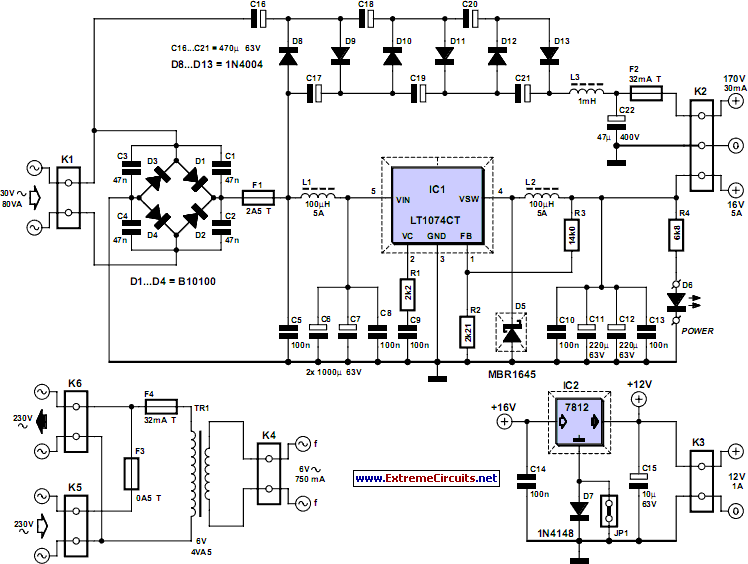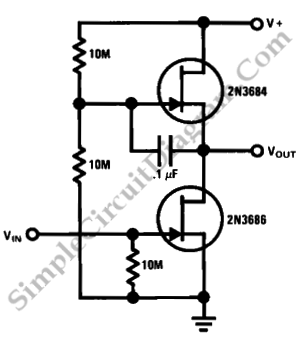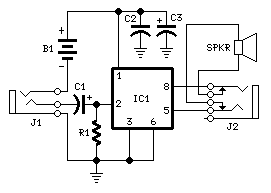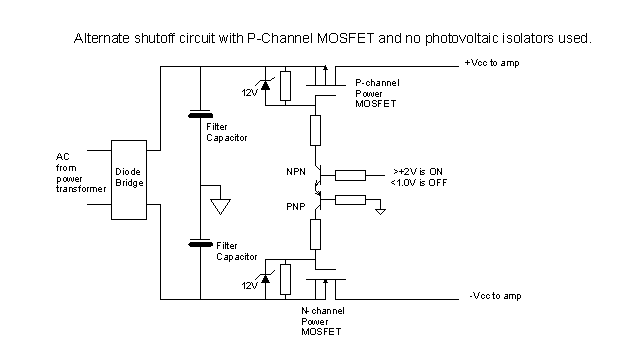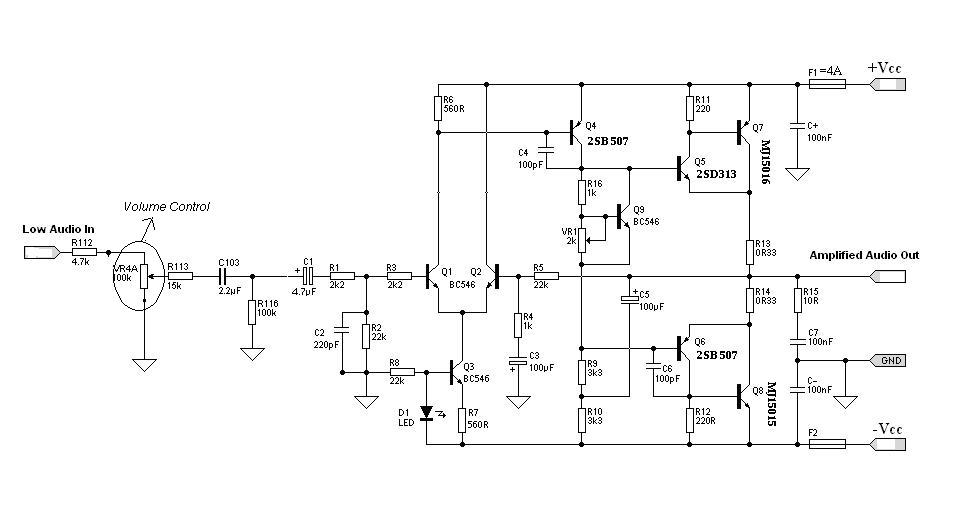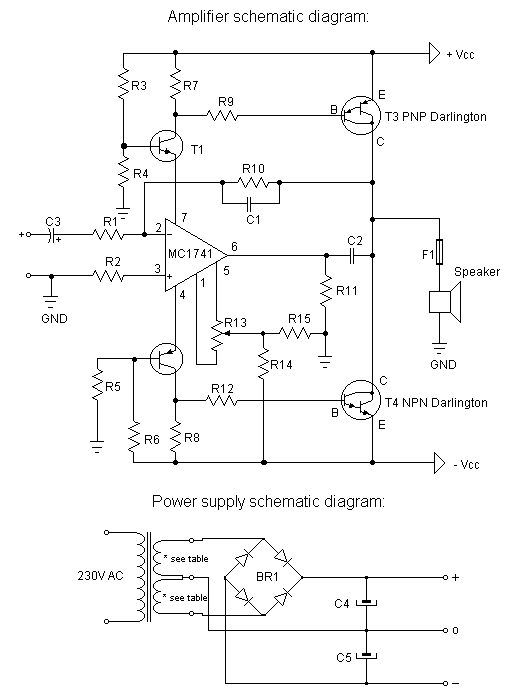
Composite CPI amplifier
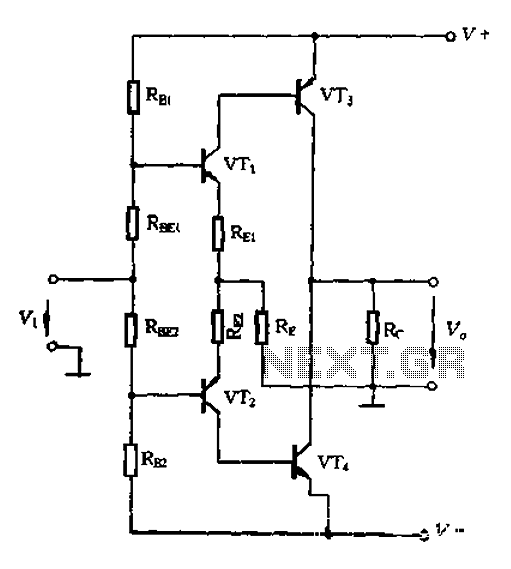
B is a pure output Class B mode power amplifier. The preamplifier input section of the circuit does not utilize a conventional differential input circuit; instead, it employs a single-ended input. This design features a single-ended output Composite CPI, which significantly optimizes the circuit. As illustrated in Figure 2-39, it consists of a direct-coupled two-stage amplifier circuit that demonstrates amplification capabilities surpassing those of a differential amplifier circuit. In this configuration, REI and Rl represent the emitter resistance, which can serve as a negative feedback resistor to stabilize the DC operating point. Additionally, it can function as a negative feedback resistor to enhance the input impedance of the circuit. To facilitate pre-matching, resistance RE is utilized to achieve the current required by transistors VTi and VT2.
The Class B power amplifier operates by conducting current through each of its output transistors for half of the input signal cycle. This allows for improved efficiency compared to Class A amplifiers, as the output devices are not continuously conducting. The use of a single-ended input simplifies the design and can reduce the number of components required, while still achieving high levels of amplification.
The direct-coupled two-stage design is critical for maintaining signal integrity and minimizing distortion. The first stage typically functions as a voltage amplifier, while the second stage serves as a current amplifier, providing the necessary power to drive the load. The emitter resistances REI and Rl play a dual role in this configuration: they stabilize the operating point of the transistors, ensuring consistent performance over varying load conditions, and they also increase the input impedance, which is beneficial for interfacing with other circuit components.
In this amplifier, the negative feedback mechanism is essential for maintaining linearity and reducing harmonic distortion. By carefully selecting the values of REI and Rl, the designer can optimize the trade-off between gain and bandwidth. The inclusion of a pre-matching resistance RE allows for fine-tuning of the input stage, ensuring compatibility with the source signal and preventing potential issues such as signal clipping or distortion.
Overall, this Class B power amplifier design exemplifies an efficient and effective approach to audio amplification, leveraging the benefits of single-ended inputs and direct coupling to achieve superior performance characteristics. B is a pure output CL mode power amplifier. Preamp input portion of the circuit does not use mass conventional differential input circuit, instead of using a single-ended input of a single-ended output Composite CPI big push to save the circuit. It works as shown in Figure 2-39, is a direct-coupled two-stage amplifier circuit amplifying ability levels even greater than the differential amplifier circuit. Circuit, REI.Rl Wei is the emitter resistance, it can be used as a negative feedback resistor to stabilize its DC working point, but also as the exchange of negative feedback resistors increase the input impedance of the circuit.
And in order to pre-match. Resistance RE is used to achieve current VTi.VT2 two o
The Class B power amplifier operates by conducting current through each of its output transistors for half of the input signal cycle. This allows for improved efficiency compared to Class A amplifiers, as the output devices are not continuously conducting. The use of a single-ended input simplifies the design and can reduce the number of components required, while still achieving high levels of amplification.
The direct-coupled two-stage design is critical for maintaining signal integrity and minimizing distortion. The first stage typically functions as a voltage amplifier, while the second stage serves as a current amplifier, providing the necessary power to drive the load. The emitter resistances REI and Rl play a dual role in this configuration: they stabilize the operating point of the transistors, ensuring consistent performance over varying load conditions, and they also increase the input impedance, which is beneficial for interfacing with other circuit components.
In this amplifier, the negative feedback mechanism is essential for maintaining linearity and reducing harmonic distortion. By carefully selecting the values of REI and Rl, the designer can optimize the trade-off between gain and bandwidth. The inclusion of a pre-matching resistance RE allows for fine-tuning of the input stage, ensuring compatibility with the source signal and preventing potential issues such as signal clipping or distortion.
Overall, this Class B power amplifier design exemplifies an efficient and effective approach to audio amplification, leveraging the benefits of single-ended inputs and direct coupling to achieve superior performance characteristics. B is a pure output CL mode power amplifier. Preamp input portion of the circuit does not use mass conventional differential input circuit, instead of using a single-ended input of a single-ended output Composite CPI big push to save the circuit. It works as shown in Figure 2-39, is a direct-coupled two-stage amplifier circuit amplifying ability levels even greater than the differential amplifier circuit. Circuit, REI.Rl Wei is the emitter resistance, it can be used as a negative feedback resistor to stabilize its DC working point, but also as the exchange of negative feedback resistors increase the input impedance of the circuit.
And in order to pre-match. Resistance RE is used to achieve current VTi.VT2 two o
